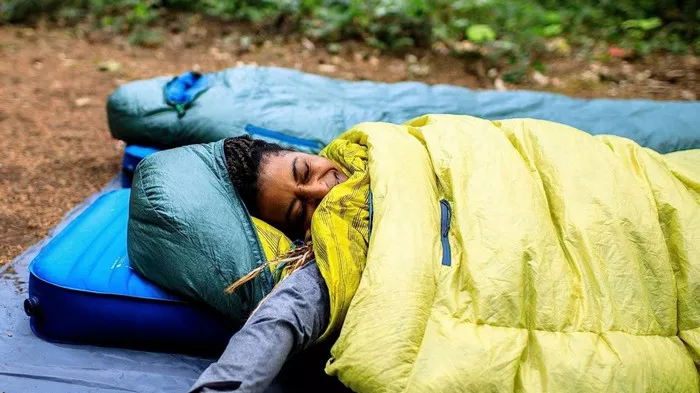When it comes to backpacking, a quality sleeping bag is one of the most critical pieces of gear you’ll invest in. The right sleeping bag can mean the difference between a restful night’s sleep under the stars and a cold, uncomfortable experience. With a vast array of options available, selecting the best backpacking sleeping bag requires careful consideration of various factors. In this comprehensive guide, we’ll explore everything you need to know to make an informed choice.
Understanding Sleeping Bag Insulation Types
Down vs. Synthetic: Which is Right for You?
The choice between down and synthetic insulation is fundamental when selecting a sleeping bag. Down insulation, usually from geese or ducks, offers exceptional warmth-to-weight ratio and compressibility. However, down can lose its insulating properties when wet, making it less ideal for humid or wet conditions. Synthetic insulation, on the other hand, retains its warmth when damp and dries quickly. It’s a more budget-friendly option and suitable for wet environments, although it tends to be bulkier and heavier than down.
Temperature Ratings and Seasonal Suitability
Decoding the Numbers: Understanding Temperature Ratings
Sleeping bags come with temperature ratings to indicate the lowest temperature at which they can keep an average sleeper warm. It’s crucial to match the bag’s rating with the expected conditions. For backpacking, consider a bag rated for temperatures slightly lower than you anticipate encountering to ensure comfort. Bags are categorized by seasons, with ultralight summer bags suitable for warm weather and 3-season bags ideal for spring, summer, and fall backpacking. For winter or extreme conditions, look for 4-season or winter-specific bags designed for sub-zero temperatures.
Weight and Packability
Lightweight Performance: Balancing Comfort with Portability
Backpackers value gear that is lightweight and compact. The weight and packability of a sleeping bag can significantly impact your overall pack weight and volume. Down insulation generally offers the best warmth-to-weight ratio, making it a favorite among ultralight backpackers. Look for bags that compress well without sacrificing insulation, allowing you to save space in your pack for other essentials.
Fit and Comfort Features
Size Matters: Ensuring a Snug and Comfortable Fit
A well-fitting sleeping bag is essential for maximizing warmth and comfort. Consider your height and build when choosing a bag; some come in different lengths and widths to accommodate various body types. Look for features like draft collars, hood cinches, and draft tubes along zippers to prevent cold spots and retain heat. Some bags also have unique footbox designs that provide additional room for your feet or allow for venting in warmer conditions.
Durability and Water Resistance
Weathering the Elements: Choosing a Durable and Water-Resistant Bag
A backpacking sleeping bag needs to withstand the rigors of the outdoors. Quality construction using durable materials enhances longevity. Water resistance is crucial, especially if you anticipate encountering wet conditions. Down bags often come with water-resistant treatments, but synthetic bags inherently offer better moisture resistance. Consider using a waterproof stuff sack or pack liner for additional protection in rainy or damp environments.
Budget Considerations
Finding Value: Balancing Quality with Affordability
Sleeping bags range widely in price depending on insulation type, brand, and features. It’s essential to establish a budget while considering your specific needs. Quality backpacking sleeping bags can be an investment, but there are excellent options available at various price points. Consider the long-term value of a durable bag that meets your requirements, even if it means stretching your budget slightly.
Additional Considerations
Beyond the Basics: Special Features and Accessories
When selecting a backpacking sleeping bag, think about additional features that may enhance your outdoor experience. Some bags have stash pockets for essentials like headlamps or valuables. Integrated sleeping pad sleeves prevent you from rolling off your pad during the night. Look for ethical sourcing if you prefer down insulation, ensuring it’s responsibly harvested.
Top Picks in Backpacking Sleeping Bags
To help you get started on your search for the perfect backpacking sleeping bag, here are a few highly-rated options across different categories:
1. Therm-a-Rest Hyperion 20°F Sleeping Bag: A lightweight down bag with an excellent warmth-to-weight ratio, ideal for ultralight backpacking.
2. Nemo Equipment Disco 15°F Sleeping Bag: Featuring unique spoon-shaped design for side sleepers and a built-in pillow pocket.
3. REI Co-op Magma Trail Quilt 30: Versatile quilt design for those who prefer a less constrictive sleeping system.
4. Mountain Hardwear Lamina Eco AF 15°F: An eco-friendly synthetic bag with good warmth and durability.
Conclusion
Choosing the best backpacking sleeping bag involves considering a range of factors, from insulation type and temperature rating to weight, fit, and budget. Remember to prioritize the features most important to you based on the conditions you’ll encounter. By selecting a high-quality sleeping bag that meets your needs, you’ll ensure more enjoyable and comfortable nights under the stars during your backpacking adventures.

